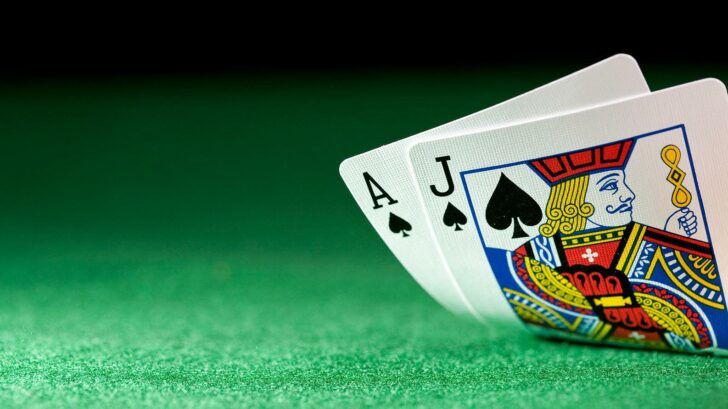Blackjack Chronicles (Part I)


Let’s collect all the historical games and their history on our quest to discover the origins of the great game of Blackjack.
The prominent status of blackjack amongst card games is supported by many factors. One of these is its long history. However, the attempt to trace the origins of the game is entangled with many irremovable obstacles. There are numerous books written on blackjack, but there is not even one dealing with its origination. Perhaps, this mysterious essence is what sustains the prestige of 21.
The history of Blackjack is rather hazy. Researchers don’t have much to say about this card game, but there are some hints pointing toward its development. In the Blackjack Chronicles we’ll track down all the existing bits for a better understating of the game’s reputation. If you join us on this exciting journey you’ll have an enhanced perspective on this renowned card game.
Trente-Un, the start of it all
Our story begins in fifteenth century Europe, around the end of the Middle Ages and the beginning of the Renaissance. Around this period the world changed in its every aspect. The once almighty supremacies were poisoned from the inside and new social classes emerged from nowhere. In this milieu there was a popular card game of Spanish origin, called Trente-Un meaning Thirty-One. The exact rules of the historical game are unknown, but its existence and popularity is proved by numerous written sources. Most of these are religious texts, threatening with the evils of Trente-Un. In 1440 St Bernadine of Siena, who later became the patron of gamblers, warned all players against the game and advised them to offer their money to their local church units. Considering their weakened influence, it’s not surprising that the game became popular.
Another mention of the game is in “Rinconete y Cortadillo” a short story by Miguel de Cervantes from his “Novelas Ejemplares.” There is passage where a professional trente-un player talks about his expertise at the game. He reveals that trente-un made a wonderful service to him as he makes a living out of it. Based on the description of Cervantes, this single-deck game was played for money. It was dealt after a cut and an ace counted for eleven. The winner had to collect trente-un (thirty-one) in order to gain the money. The vagabond treated his deck with appreciation even though the cards were dirty and worn. There is modern game with the same name, but it should not be mistaken with this historic one. This game was the forerunner of many other games and it is the starting point of our investigation.
Even Shakespeare comes into the Picture
Our next trace originates from an Angolo-Italian lexicographer, royal language tutor and linguist, John Florio. Allegedly he was a friend and influencer of Shakespeare and a highly appreciated writer. In 1598 he published the first-ever comprehensive Italian-English dictionary, called “A World of Words.” Florio contributed with more than thousand new words to English language, with ‘Bum-card’ for example, which stands for a someway marked cheating card. In the same dictionary he gives a short description on a card game named Trentuno, otherwise known as Bone Ace. There is another source mentioning this game, notably “The Compleat Gamester” of Charles Cotton from 1674. An interesting fact is that this Renaissance guide for many different games is still available nowadays. It provides an insight into the popular free-time activities of the period. Fortunately Cotton’s description is more lengthy and clear than Florio’s.
Bone Ace is played by up to 8 players and it does not include any casino strategy. Each player is dealt three cards by the dealer, two of them face down and one face up. After this, the game is divided into two parts. The first part is called “Bone”, where the player with the highest face-up card wins a coin from his peers. Aces are the highest ranked card, while the Ace of Diamonds is the “Bone Ace”, beating all other cards. In the second part all face cards are valued 10 points. The winner is whose hand is closest to 31 without going over it. An exact thirty-one is granted win. This card game is often mentioned as the forefather of Blackjack and it introduces us to our next station.
Another step closer to Blackjack
There was a European casino favorite in the sixteenth century, called Quinze. This game was much appreciated for its fair rules and simple nature. A card game of chance, where players had to acquire a hand as close to fifteen as possible, as quinze means fifteen in French. Most of the times it was dealt between 2 players with a pack of 52 cards. In this game the ace counted as one, the court cards as ten and the others according to their value. After the deck was shuffled everybody, including the dealer was dealt 1 card face down. They all had to play their hands before the dealer, but they’ve had the chance to hit or stand. A 15 based on two card was a natural, which was the strongest arrangement. Unlike in Blackjack rules, the dealer could hit or stand whenever he wanted. But similarly to 21, the dealer had an edge since he was not playing his cards until the players completed.
It I said that all these games contributed to one, which is believed to be the closest relative of blackjack. The basic structure of these games is really similar to that of modern 21. Even though they may be long forgotten, if we want to explore the true origins of the popular game it is necessary to recall their story and rules in brief. In the next part we’ll get even closer to Blackjack.




